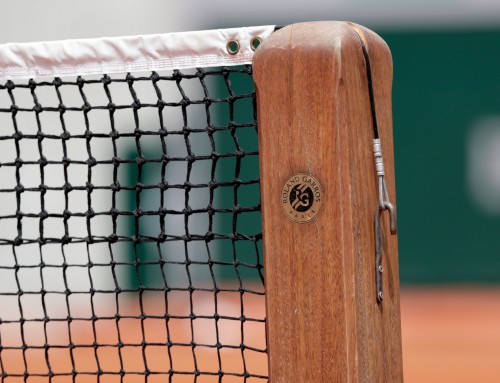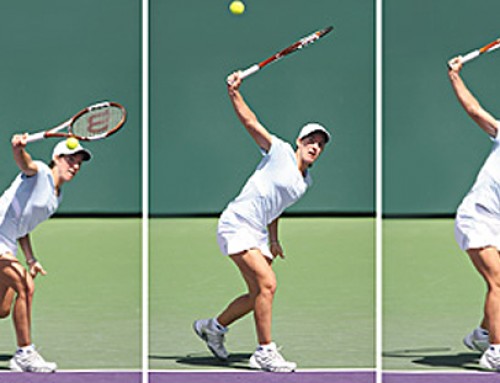Ever watch a professional tennis match on TV, and wonder to yourself “why do they keep hitting the ball back to each other?”. Often times you will see pros get into repetitive cross court court rallys. The reason is, each is waiting for an opportunity to hit down the line that would give them an advantage. Hitting cross court is safer, and they know it, so a smart player will often only hit cross court unless there’s an opportunity that out weighs the risk.
Most of the reasons that cross court is better are pure geometry. Tennis is a game of angles, and you need to know how to take advantage of them. Below I will list the three main reasons that you need to be playing and practicing cross court.
1. There’s more room to hit to! In fact, a lot more room to hit to. Every tennis court is 78 feet in length. When you aim down the line, thats about how much room you’re going to have to lift the ball over the top of the net, and still have it fall safely within the lines. From corner to corner cross court in singles, you have an extra 4 and a half feet! Thats huge. Think about how many ground strokes you miss by a foot or two, if you were smart and aimed to the largest part of the court, these mistakes would be reduced. In doubles, the difference between down the line and cross court is a full 8 feet. Thats larger than a 10% increase in space to hit to. Please re-think that return down the alley.
2. This one is self explanatory, but certainly worth stating. The net is lower in the middle. When you hit from corner to corner on a tennis court, not only are you using the largest amount of court space available, but you’re hitting over the lowest part of the net. You’ve now decreased risk in two different ways. At the net post, a regulation net is 3.5 feet. At the middle, it is 3. So that cross court return in doubles gives you an extra 8 feet of court, and half a foot of net.
3. When you hit at an angle, your opponent has to work harder to get to the ball. Everything else being equal, when you hit cross court, your opponent will have farther to travel to get to the ball, as opposed to hitting down the line. The angled shot will travel farther and farther away from him or her the longer it takes for them to retrieve it, where as a ball hit straight will continue to stay the same distance from them through out its path.
So there you have it. Not only is cross court safer in every regard, but your opponent will have to work harder to get to the ball. It just doesn’t make sense to go down the line a lot. Now, as with anything, there are exceptions. Here’s a short list of reasons why you may want to go down the line and incur the extra risk:
1. If your opponent has a noticeably weaker side. Sometimes it just makes sense to put the pressure on a weak backhand or forehand. Wait for a relatively easy shot, and then go for it.
2. If your opponent is well out of position. If they’re having a hard time recovering towards the middle of the court after a well hit angle from you, then down the line can pay off.
3. If you’re approaching the net in singles. This is called “shading”, or following the ball as you approach. I will write a full article on this at some point.
4. In doubles, once you get up in front of the service line and get an easy volley or overhead, often times you have a net player directly across from you also at the net. In this instance straight ahead and at the feet of the net player is a great place to aim.
Well hopefully you now have a good understanding of why cross court is in general superior to down the line. Down the line isn’t “wrong”, but if you’re trying it even close to the number of times you’re hitting cross court I can pretty much guarantee you’re making a lot more mistakes than you should be. Save the high risk shot for when you have the upper hand, and you will be more successful!








